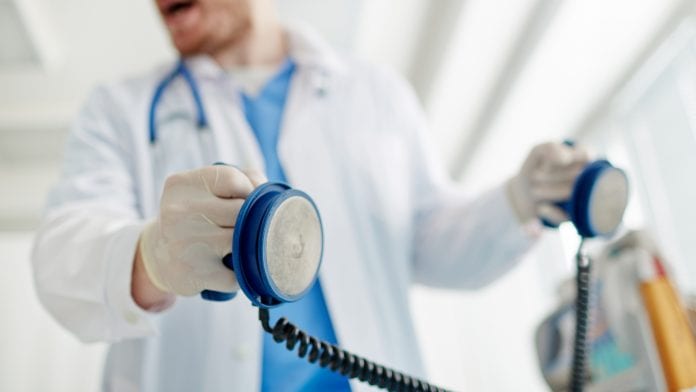
Despite significant cost and minimal evidence that mechanical resuscitation devices benefit patients, the devices are being used more often than ever.
The research, published in the Journal of the American Medical Association (JAMA), found a fourfold increase in the use of mechanical resuscitation devices (of the cardiopulmonary resuscitation (CPR) devices) among emergency medical technicians in the US over a six-year period.
Is the use of mechanical resuscitation devices effective?
“It was particularly surprising because the mechanical CPR has not been tested for effectiveness by the FDA, even though it was approved by the FDA,” says T. Greg Rhee of UConn Health, and a study author. “We don’t really know if it is effective in terms of keeping people alive and whether it is cost effective.”
Reviewing data from 2010 to 2016, for 892,022 patients nationally who were identified by emergency medical professionals as having an out-of-hospital cardiac arrest, Rhee conducted the research along with collaborators at Yale University and University of California, San Francisco.
In settings outside of hospitals, CPR performed manually is still done much more often than by machine – about 69% of the time, the researchers found. However, the mechanical use rose steeply during that time period – from about 2% in 2010 to 8% in 2016.
Increasingly, EMTs are using the devices, even though it’s not clear whether it is more effective than CPR performed by hand, says Rhee.
What’s the issue?
According to the federal Centers for Disease Control and Prevention, every year in the United States, about 735,000 people have a heart attack.
CPR, which is to be done when the heart stops beating, can double or triple the chances of survival after cardiac arrest, when done immediately by keeping the blood flow active, according to the American Heart Association.
An increase in incidents of cardiac arrests being treated outside of hospitals along with anecdotal evidence on an uptick in the use of the mechanical intervention helped spur the decision to do the study, according to Rhee.
CPR is used on the vast majority of people who suffer cardiac arrest outside of hospital settings. According to the authors, mechanical CPR devices are expensive and prior clinical trials have not provided evidence of benefit for patients when compared with manual CPR.
The increase is particularly worrisome, not only because of the uncertainty of clinical benefit associated with device use, but also because of the devices’ known significant costs; mechanical CPR devices are often priced higher than $10,000 per unit.
More evidence is needed
“Given the high costs of mechanical CPR devices, better evidence is needed to determine whether these devices improve clinically meaningful outcomes for patients treated for out-of-hospital cardiac arrest by emergency services professionals to justify the significant increase in their use,” the researchers wrote.
Rhee explains how one possible reason for the increased use of machine CPR is marketing done by medical device companies. But more research needs to be done on that question, he says.
More importantly, according to Rhee, more research must be done to determine the effectiveness of machine versus manual CPR, which the researchers are now planning to pursue.
“This is more like an initial step to build further research on mechanical CPR used outside of the hospital setting,” concludes Rhee.
























